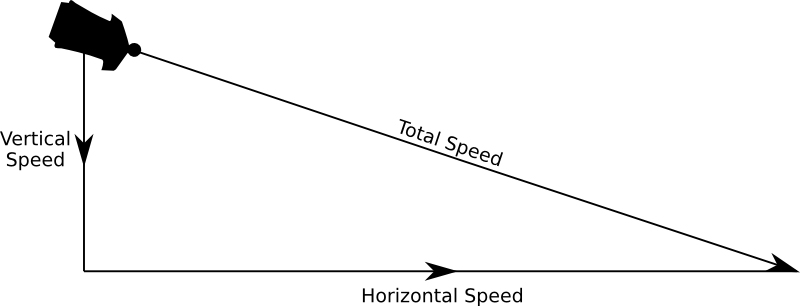Wingsuits have captured the imagination and curiosity of many. As you soar through your head dreaming of the possibilities, there’s no doubt one thing prominent on your mind: wingsuit speed. So – how fast can you go in a wingsuit?
First things first though. In order to fly a wingsuit, there is a laundry list of requirements to meet before donning the webbed suit – because there are more elements to manage than in a traditional skydive, and well – safety first! For example, you need to earn 200 skydiving jumps (and yepp – WNY Skydiving can teach you all about it in their Wingsuit Academy).
A Brief History of Wingsuiting
Wingsuit flying (or as we say in skydiving, wingsuiting), is a discipline of skydiving using a specific jumpsuit with fabric webbed between the legs and each arm, adding surface area to the human body and creating an increase in lift capacity. The idea of (unassisted) flying and gliding through the air like a bird is the dream of many, and the discipline quickly gained popularity in the 1990s. The webbed-looking suits have also evolved for better performance to effect an increased wingsuit glide ratio and speed.
The Need For Speed – Wingsuit Speed!
So – how fast can you go in a wingsuit? We get that question a lot. In traditional body flight (ie skydiving), a jumper can reach vertical speeds between 120mph and 160mph – depending on their axis (for example: flying belly-to-earth or head-to-earth). A wingsuit’s webbed design creates an added surface area, affecting lift like the wing of an airplane. This additional surface also increases drag that affects the vertical speed of the flier. The average wingsuit speed is about 100mph, and it increases the glide ratio (or also known as lift versus drag) to 3:1. That means a wingsuiter travels 3 feet forward for every foot they freefall vertically.

Mastering the wingsuit glide ratio and wingsuit speed takes practice and precision. You have to learn the aerodynamics of the wingsuit, and even take a bit of science into your hands. Winds aloft is one aspect you can use to your benefit. What is “winds aloft”, you ask? The winds at higher altitudes are read in increments of 3,000’. There are reports that convey what the approximate wind speeds and direction are. Knowing this can help you strategize to increase your speed. For example, if the winds are coming from one direction, you can choose to go downwind in freefall of that projected direction to increase your speed.
In wingsuiting, there’s a lot at play. A little science, a little athleticism, and a lot of passion to learn the nuances of the discipline. Some skydivers, like British Wingsuit Pilot Fraser Corsan, took on this challenge to set the top wingsuit speed record at a whopping 246.60 mph! So how fast can you go in a wingsuit, really? As it turns out, that wholly depends on your skill level and the type of wingsuit you fly.
Going the Distance
Another fascinating thing about wingsuiting is the horizontal distance you can cover while flying through the skies. Increasing your wingsuit speed or glide ratio depend on the type of wingsuit you use and your body position in the suit. Different wingsuit manufacturers can also create different wings for different kinds of “pilots” (aka jumper).
For beginners, an entry-level wingsuit is lower-performance and has less features than a custom suit, making it also easier to control. In addition, your body position, strength, and stamina matter. Holding your arms out, either rolling them forward or back, and having less of an arched back with straight legs will give you a “flat” body position. This essentially helps you extend out your wings in the suit, and increases your lift and wingsuit glide ratio, equalling how far you will travel. Just ask former Navy Seal Andy Stumpf! In 2015 he jumped from 36,000 feet in his wingsuit and covered 18.26 miles – making that distance a new world record!
Are YOU Next?
Each of these impressive wingsuit athletes (plus a few you’ve no doubt seen on Youtube) started at the beginning. They had a dream of body flight, imagining soaring the skies in a wingsuit. Then they earned their licenses and learned how to fly a wingsuit. All the elements may sound daunting and unattainable, but in training, it’s all broken down so you gain skills on each jump. Who knows, maybe you’ll be the next skydiver to set the top wingsuit speed or master the wingsuit glide ratio!
What are you waiting for? Start today with your first skydive! We’re looking forward to seeing you at the dropzone.
Categories:
About: WNY Skydiving
WNYSkydiving is a full-service skydiving facility and training center in Western New York. Whether you’re interested in making a single tandem skydive or you want to earn your skydiving license, we have programs to fit your needs. As a training center, we not only teach new skydivers – we help experienced skydivers learn new disciplines including wingsuiting, formation skydiving, and much more. Our instructional staff is the most knowledgeable and experienced in Western New York, with more than 40,000 jumps to their credit. Conveniently located at the Pine Hill Airport in Albion, the WNYSkydiving is within easy driving distance of Buffalo NY, Rochester NY, and the Finger Lakes region. Nestled on the border of Orleans and Genesee County, WNYSkydiving offers incredible views of Lake Ontario, the Erie Canal, the mist from Niagara Falls, and even the cities of Rochester, Buffalo, and Toronto.
Follow WNY Online
Get news and updates in your inbox!
"*" indicates required fields
Skydiving Safety
WNYSkydiving is a member of the United States Parachute Association.

- Location:
- Western New York Skydiving
- Blog
- Wingsuit Flying
- Wingsuit Speed: How Fast Can You Go in a Wingsuit?
Copyright © 2024, Western New York Skydiving, All Rights Reserved.
DropZone Web Design & Marketing by Beyond Marketing, LLC



